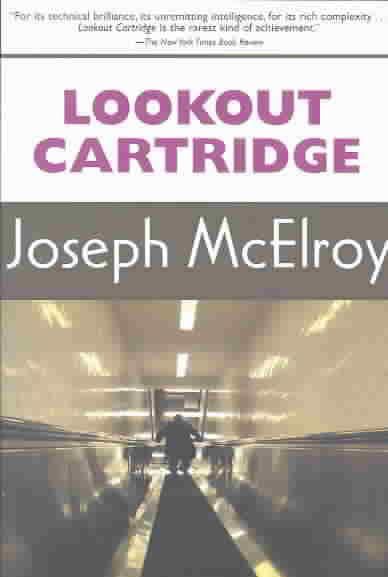8 /10 1 Votes8
Pages 531 Originally published 1974 Page count 531 | 4/5 Goodreads Media type Print (Hardback) ISBN 978-0-394-49375-6 | |||||||||||||||||||||||||||||||||
 | ||||||||||||||||||||||||||||||||||
Genres Fiction, Postmodern literature, Techno-thriller Similar Joseph McElroy books, Fiction books | ||||||||||||||||||||||||||||||||||
Lookout Cartridge is Joseph McElroy's fourth novel, published by Knopf in 1974.
Contents
The narrator, Cartwright, had made with his friend Dagger a fairly pointless art film/documentary using loaned professional equipment, with scenes set in Stonehenge, Hyde Park, and other locations in England, plus one scene in Ajaccio, Corsica. But someone destroyed it, and when acquaintances in New York press Cartwright for information about an alleged second print, the sound track, and even his personal diary, he finds himself trying to find out what really happened. Doing so involves multiple trips between New York and England, including a visit to the Hebrides and the Stones of Callanish, and increasing danger and death.
Larry McCaffery ranked Lookout Cartridge 39th in his top 100 20th-century English novels list.
Film summary
The separate scenes are:
Style
The language of film, computer technology, information theory, and liquid crystals permeate the novel.
McElroy tried to make the novel as "cinematic" as possible, filled with information. The sentences were made deliberately labyrinthine, meant to be on the edge of incomprehensibility, yet to always feel as if significant clues had to be present.
In the 1985 Carroll and Graf paperback reprint, McElroy wrote an introduction "One Reader to Another". He starts by stating that he recalls some French writer "arguing that fiction can't compete with film in visual immediacy." He recalls that his reaction then and in 1985 is that, "by magic ink-sign crypto-telepathy, words in the right sequence can transmit between remote minds the mind's motion pictures."
Reception
For its technical brilliance, its unremitting intelligence, for the rich complexity of the homologies and analogies between its systems and the fearful times we live in, Lookout Cartridge is the rarest kind of achievement.
Spectacular, richly imagined . . . an excruciatingly difficult book to put down.
... a hypnagogic blowup of the metaphor of survival even if ... survival no longer seems very important.
Very hard to read, and very much worth the effort.
